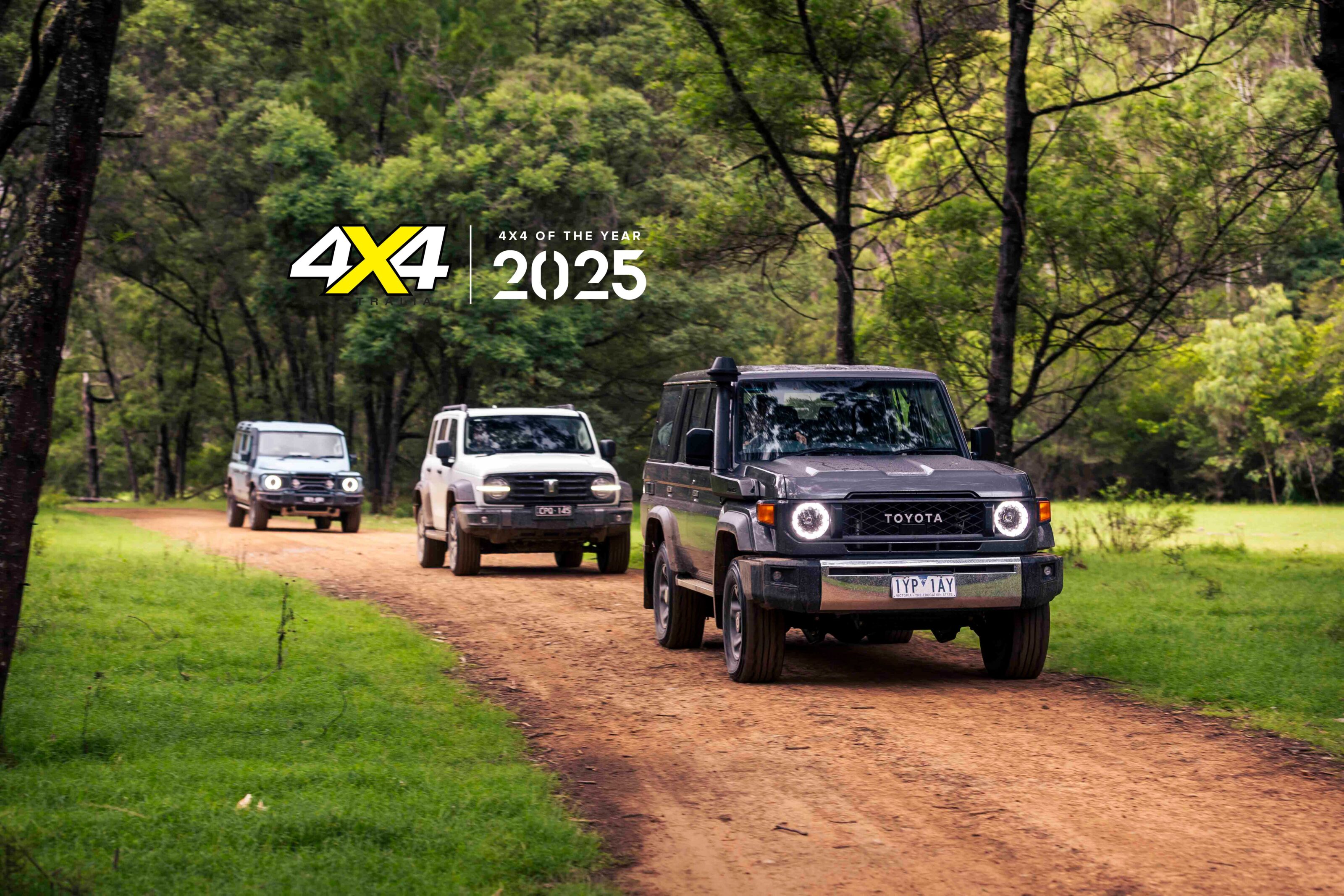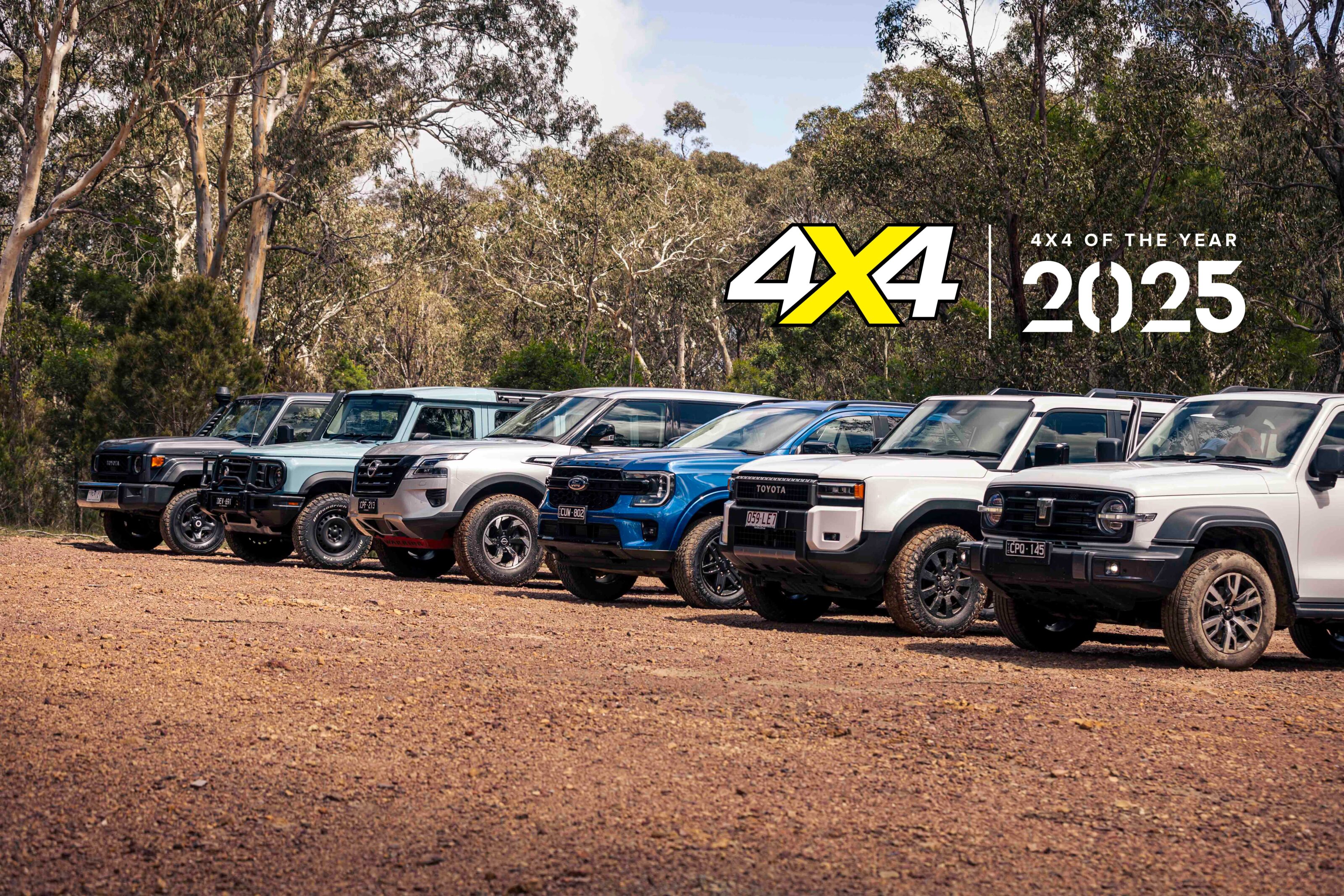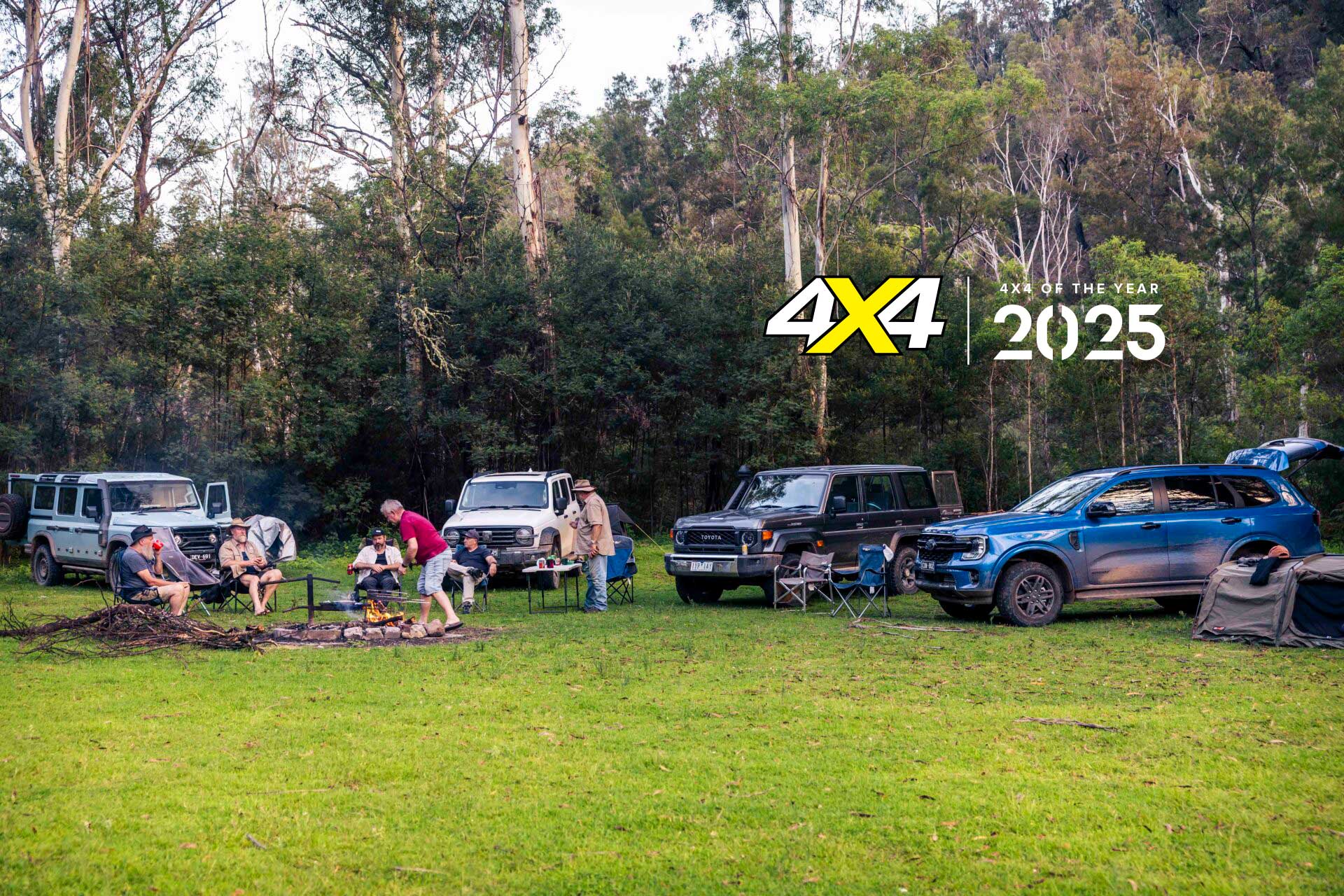The Grand Cherokee just keeps on coming back for more when it comes to 4X4OTY.
It’s already a two-time winner, and this is the fourth time a model from this generation Grand Cherokee has been shortlisted for the award.
This is thanks to its on-going mechanical evolution, which saw it win on debut in 2011 with a petrol V6, finish third the following year (behind two Toyotas in a very strong field) as a diesel V6, and then win again in 2014 when an eight-speed automatic joined a revised diesel engine.
What we have this year is the first time there’s been a Grand Cherokee pitched specifically at the off-road enthusiast. Not only does it combine all the off-road options in the Grand Cherokee catalogue, but there’s some bespoke Trailhawk bits that help make it somewhat of a ‘factory custom’.
Despite Jeep being an ‘All-American’ icon, the Grand Cherokee’s mechanicals are essentially a German/Italian mix, including Mercedes-Benz chassis, a V6 diesel from Fiat/VM Motori, and gearbox from Germany’s ZF; all reflecting Jeep’s corporate tie-up with Benz and now Fiat.
TOURING
The Trailhawk is a very accomplished road car, no matter the nature of the road. Of course, it should feel at home on the road given its fully independent suspension and monocoque construction, but it delivers even beyond that.
Perhaps it’s the Benz heritage shining through, but the Trailhawk’s combination of responsive and sharp steering, poised handling on the bumps and plenty of punch from its V6 diesel makes it very much a ‘driver’s car’ by the standards that prevail in the wider 4×4 world.
It’s also a great car to eat highway distance thanks to the engine’s low-rpm torque and the long-legged eight-speed. Not much wind or road noise, either, and a comfortable ride on standard 18s.
The air-spring suspension provides off-road lift but helps on-road dynamics and aerodynamics by automatically lowering itself (from a default ride height that is already low) once up to highway speeds.
TRAIL DRIVING
The height-adjustable air-spring suspension is the Trailhawk’s number one off-road party trick. With the simple press of a button you can jack up the Trailhawk from its default road clearance of 205mm to 233mm (the standard off-road setting) or all the way to 260mm at the highest setting.
The downside is that, when jacked up, the Trailhawk has less droop travel, which results in the suspension banging and crashing on the bump stops over rough ground, especially on the highest setting. On the standard off-road setting (233mm) things aren’t too bad, but the Trailhawk is never particularly plush off-road given the suspension’s limited travel regardless of where the ride height is set.
While not particularly comfortable in rougher off-road conditions, the Trailhawk is certainly capable enough thanks to its ‘smart’ 4×4 system with effective terrain settings, a self-locking rear diff, deep low-range gearing, standard all-terrain tyres and solid underbody protection.
Not so good off-road is the low driving position with poor over-bonnet visibility and a limited wading depth (508mm claim), as the air intake is somewhat vulnerable located under the bonnet lip. The off-idle throttle progression isn’t great, either.
SET-PIECE HILL CLIMB
As ever, the make-or-break set-piece hill-climb reveals much of the 4X4OTY contenders, and it’s certainly no different with the Trailhawk. Here’s it’s all about suspension travel – or lack of it, to be precise – and chassis electronics.
Jacked right up the Trailhawk has no trouble with clearance, but the short-travel suspension has it bucking around, lifting wheels and putting on a dramatic show. It shouldn’t be able to make the climb, but it does, and, apart from the extreme body movement, does it with little fuss. For that you can thank Jeep engineers’ mastery of traction control calibration and the ‘tuning’ of the rear auto locker. Excellent hill-descent and hill-ascent control, too.
CABIN AND EQUIPMENT
As 4×4 wagons go, the Trailhawk is more medium than big and, unusually in the segment, only seats five. The cabin also feels somewhat closed in and more passenger-car wagon than 4×4. Still, it’s comfortable up front; although, the driver’s footwell is a bit crowded, especially with the foot-operated parking brake.
Not a big rear seat, either, and luggage space is more okay than good. The spare is under the floor, which means clearing the luggage area to change a flat.
Given the Trailhawk sits near the top of the Grand Cherokee range, it’s no surprise to find it loaded with all the kit most people want; although, high-end safety features like radar cruise, forward-crash warning, blind-spot monitoring and rear cross-path detection are optional ($3250).
PRACTICALITIES
The Trailhawk’s respectable fuel capacity (93.5 litres) and frugal engine make for a good touring range as standard – the best of our six contenders, in fact. Likewise, the 256/60/R18-inch wheel and tyre package is Prado/Hilux size for added practicality, although you can’t fit 17s.
Positives include a 3500kg tow rating (and plenty of V6-diesel torque to back that up) and decent aftermarket support for things like frontal protection and snorkels.
SUMMARY
Despite being the most off-road oriented Grand Cherokee so far, the Trailhawk is still a Grand Cherokee, for better or worse. That means it’s excellent on-road – even on very poor roads – and more than handy off-road, even if it could be more comfortable. Its strong value is offset by the fact its more a medium-size 4×4 wagon than a large one.
2018 JEEP GRAND CHEROKEE TRAILHAWK SPECS Engine: 3.0-litre V6 turbo-diesel Max power: 184kW at 4000rpm Max torque: 570Nm at 2000rpm Gearbox: Eight-speed automatic 4X4 system: Dual-range full-time Kerb weight: 2300kg (approx) GVM: 2949kg Payload: 649kg Towing capacity: 3500kg GCM: 6099kg Fuel tank capacity: 93.5 litres ADR fuel claim: 7.5L/100km Test fuel use: 10.2L/100km Touring range*: 867km Price: $77,400 (+ORC)
*based on test average, tank capacity claim and a 50km safety margin.





